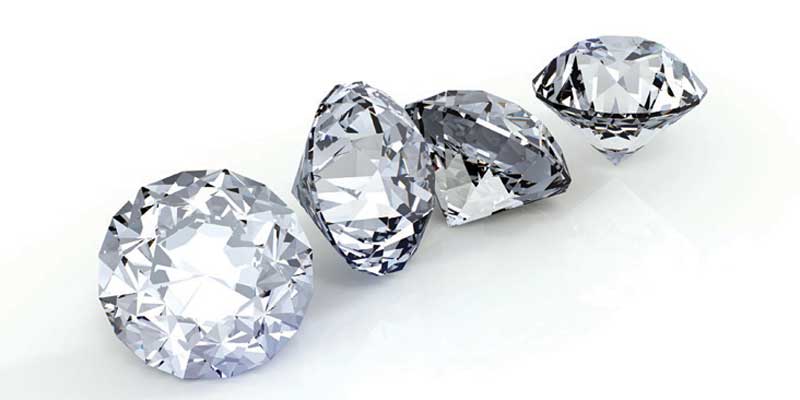By Melvin Moss
 There’s a lot to say about the power of branding. The Polar Bear Diamond was among the first wave of branded diamonds. De Beers had just discontinued its Diamond Promotion Service (DPS), so the timing was opportune. The Polar Bear brand relied on Canadian origin as its primary differentiator; juxtaposing Canada’s pristine image to that of blood and conflict in Africa. The idea of branding a diamond, from the very beginning, is founded in the promotion of one diamond at the expense of others.
There’s a lot to say about the power of branding. The Polar Bear Diamond was among the first wave of branded diamonds. De Beers had just discontinued its Diamond Promotion Service (DPS), so the timing was opportune. The Polar Bear brand relied on Canadian origin as its primary differentiator; juxtaposing Canada’s pristine image to that of blood and conflict in Africa. The idea of branding a diamond, from the very beginning, is founded in the promotion of one diamond at the expense of others.
Ten years ago, I wrote an article for Jewellery Business called “Mark…my words.” My contention then was “too many industry initiatives can effect more confusion than benefit.”
So, what has transpired since?
Ten years later
The Polar Bear brand is gone. De Beers’ Supplier of Choice (SoC) program failed and morphed into Forevermark.
Today, De Beers is expanding into every level of the diamond pipeline including mining, manufacturing, wholesale, retail, and grading. The World Federation of Diamond Bourses (WFDB) is promoting the World Diamond Mark, a retail-based ethical incentive. Major diamond miners formed The Diamond Producers Association (DPA), which is tasked with promoting generic diamonds. The Kimberley Process (KP) is being harshly criticized by industry and non-governmental organizations (NGOs), and is trying to be relevant in an increasingly transparent world.

The Responsible Jewellery Council (RJC) has a membership based mainly in mining and manufacturing resulting in minimal impact on retail practices. The Israeli Diamond Exchange (ISDE) is expanding into online sales and is assisting Israeli diamond manufacturers in selling directly to the public.
The CanadaMark origin program continues with modest success. CanadaMark is attempting to gain more recognition by giving an exclusive online presence to e-retailer James Allen.
Rapaport is involved in everything from investment diamond schemes to politics. Local jewellery organizations are somewhat irrelevant. The Canadian Diamond Code of Conduct (CDCC) is teetering on the brink of extinction. Diamond grading scandals abound and retailers are realizing how dangerous it is to promote grading brands in place of their own knowledge.
Brand power
The purpose of initiating any branding program is to differentiate a product with the specific intent of increasing sales. I want to stress when I speak about diamond branding and differentiation, I am not referring in any way to jewellery brands. A jewellery brand is defined by the use of different gemstones, metals, fashion, and artistic expression, whereas a diamond is simply a diamond.
When BHP Billiton created the CanadaMark origin program, it instituted a condition stating no authorized vendors could promote CanadaMark with any negative references to generic diamonds.
Today, under Dominion Diamond Corporation, standards have changed. The CanadaMark origin brand can be found publicized in contrast to scenes of third-world mining abuse and atrocities—I use the term brand with reference to CanadaMark because when Dominion Diamond decided to remove exclusive vendor licensing from their chain of custody, their CanadaMark origin card became another brand.
Origin-based brands i.e. CanadaMark, those supported by a proposed superior diamond report i.e. Forevermark, investment quality brands i.e. Rapaport Investment Diamond Certificate, or brands bases upon retailers’ ethics i.e.World Diamond Mark can all be viewed as diminishing the appeal for diamonds as a category.
Take Newton’s Third Law as the example, “For every action, there is an equal and opposite reaction.” Translated into diamond terminology, a positive reason for buying a specific branded diamond suggests an equal and opposite reason for not buying any other diamond.
De Beers sells Forevermark diamonds as traceable and more ethical than the generic diamonds they supply to non-Forevermark sightholders. De Beers’ Forevermark claims one cut from the same parcel of rough diamonds is somehow superior to a second cut. Chaim Zohar, president of Diamonds Intelligence Briefs, points out De Beers efforts to add value to their diamonds are not profitable: “Maybe the time has arrived for Anglo American (De Beers) to review these downstream activities that were developed over a period of well over a decade and that represent a drain on its cash and profits,” says Zohar. “None of these activities, as far as is known, have delivered a profit to the company yet, and the costs and investments are huge.”
Initiatives like De Beers retail stores and Forevermark are simply not making any more profit after expenses than if De Beers remained exclusively in mining and rough distribution.






Excellent commentary